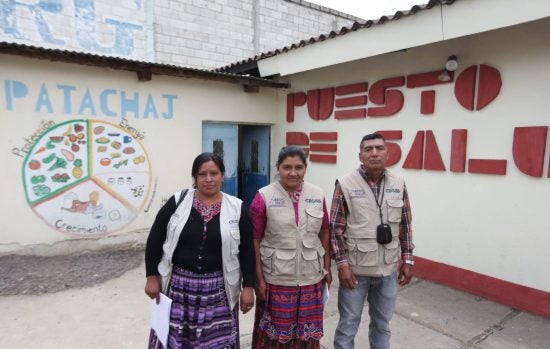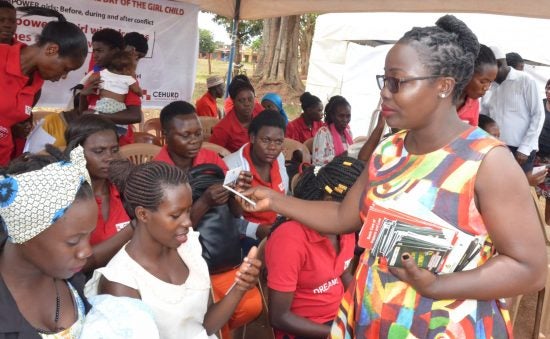
Community health defenders in San Cristóbal Totonicapán, Guatemala. Image courtesy of CEGSS.
Even as we mourn our losses, it is not too soon to start planning for tomorrow, or else a better tomorrow may never come. For, I believe, the best tribute for all who perished – and will yet die – is to create a better tomorrow. And it may be when the pain is freshest and the tears still wet upon our faces, and when even as we begin to slowly return to an abnormal form of normal life, with masks and physical distancing a constant reminder of COVID-19, that we are most motivated to act. It may now now, as the number of new infections globally hits awful new highs, when anything short of everything seems almost like nothing.
In this and my next postings, I will offer three proposals that should be core parts of an improved post-COVID-19 global health architecture, one based in the right to health. Next time I will write about how the Framework Convention on Global Health and heath equity programs of action should be established as integral aspects of post-COVID-19 global and national health law and policy. Here, I focus on a new initiative, the Right to Health Capacity Fund (R2HCF).
The R2HCF is a newly launched global civil society-led initiative. The fund would fill two critical financing gaps. First, it would fund right to health advocacy, supporting civil society organizations in everything from right to health-related community organizing to policy analysis and litigation. Second, it would provide grants to mechanisms for accountability and participation. These are structures and initiatives such as right to health education, health facility monitoring, access to justice programs, and participatory community design. While these areas are not without financing entirely, the financing is minuscule – particularly in light of their central importance to robust health systems that respond to people’s needs.
There are innumerable ways that an R2HCF would help create strong, equitable systems for health. For example, advocacy – people in the streets, meetings with policymakers, legal action – could lead to higher health budgets, for both health care and essential health needs like clean water, decent sanitation, and safe housing. Community auditing and public education on government health-related funding that has been allocated would lead to those funds being properly spent. Advocates might press for initiatives to ensure health care for rural communities, like a well-funded community health worker initiative. Civil society reporting would ensure that health system shortcomings and abuses, like discrimination, or if poorer communities are not receiving their fair share of health funds, are revealed to the public. This, too, would also contribute to responsive health systems.

Members of the Center for Health, Human Rights and Development (CEHURD), a Ugandan NGO, distribute handbooks to adolescent girls and young women to guide them in enforcing the legal empowerment and social accountability strategy in pursuit of the right to health. Image courtesy of CEHURD.
Such robust health systems, critical for equitable and universal health coverage and meeting the Sustainable Development Goals, are themselves necessary to prevent, contain, and control disease outbreaks, and to minimize their toll. The R2HCF could also contribute to ensuring rapid and effective response to disease outbreaks – and even preventing outbreaks, such as by supporting advocacy for wildlife trade to be banned. (Such trade, including when live animals are then sold at food markets, as happened in Wuhan, is a ready source of novel and emerging infections.)
If advocates succeed in getting governments to train and retain more community health workers, they could become contact tracers, as in South Africa during COVID-19, and a key source of trusted information. Trust is one of the most precious assets in containing outbreaks, necessary if people are to comply with public health measures like physical distancing and quarantines. Regular dialogues between community members, health workers, and government health authority could help create trust, as well as contribute to accountability and ensuring that health systems meet the needs of communities. Trust in health messaging could also come from successful advocacy for policies to recruit health workers from the communities they serve, and from marginalized populations.
Advocacy and civil society monitoring could extend to the International Health Regulations (IHR) (2005), the WHO treaty on global health security, and to core disease prevention and control measures, like surveillance and laboratory capacity. Health facility monitoring and joint community and health worker action plans for improving local health systems could encompass infection prevention and control.
The benefits of greater health security and universal coverage of both health care and public health necessities like clean water and adequate sanitation are immense. The funding needed for the R2HCF would be small in comparison to such vast potential. Advocates are calling for an initial annual target of $500 million per year, though further understanding of the financing needs for R2HCF areas of focus is a must.
You can join this movement for the R2HCF. If you’re interested, please let me know (eaf74@law.georgetown.edu). Even as the campaign will take a little longer to get going in full due to even more immediate COVID-19-related demands on the time of many of us involved, we hope to begin moving forward in short order.
Meanwhile, please keep an eye out, in the coming weeks, for the second part of this series of three proposals for a right to health-based post-COVID-19 global health infrastructure.



